Trucks, Page 1:
A Brief History Of The Truck:
The modern truck in the United States descended from the horse drawn wagon. The first actual "truck" was the 1769 steam Cognot wagon. The Fourness of 1788 was next followed by steam tractors built in the early 1800's by Trevithick & Vivion. If I were to list every steam vehicle which waqs used there would be dozens from the Cognot to the vehicles in the 1880's. Nearl all were built and operated in Europe. From the early 1800's to the 1880's, these early vehicles were often time busses. In the US, steam trucks could be counted on your left hand!
From the early 1840's to the end of the 1880's steam was the primary means of power. Gasoline power begins to emerge by the late 1880's but were low in power, very hard to operate, and were unreliable. It wasn't till the early 1900's thar gas powered vehicles began to actually become viable. Let me make it clear, there were very few gas powered truck until after World War I. Electric trucks also emerged after 1888 and were used until the early 1900's (lost ground after 1908) but were used only in larger cities. The problem with electric vehicles was the low speed, short travel distances, and limited recharging stations. I don't want to get into electrics because they were really utility vehicles and were only used in a few big cities. Furthermore, steam trucks were very rare, especially in the US and did not rally begin to be seen as serious vehicles except for a very few companies. Trucking as we know it today really doesn't begin till around 1905, and even then represented about 1% of the trucking business. The horse and wagon dominated in the Unoited States!
Modern trucking really begins after 1905 and even at that time, trucks were used in very limited situations. The growth of the gasoline powered truck coencides with the development of the gasoline engine. To be more realistic, the gasoline powered truck didn't really take root till around 1915 and didn't grow in numbers till the 1920's.
The truck above dates before 1910:
The truck above dates sometime in the very late teens to possibly the mid 1920's. Most early trucks had solid rubber tires but pnumatics (air filled tires) were used as early as the late 1920's. Solid rubber tires were often used into the 1930's. Many truck companies used solid tires because fixing flats was costly and repairs took time away from the business. Tires were a huge issue with all vehicles until the late 1930's.
The early trucker had to be tough and hard working:
The picture above dates from the early 1940's. The Ford truck, on the left, probably had the 95 horse power flat head engine. Trucks were slow, required much maintenance, but had become much more reliable than the trucks from just decades earlier. By the late 1920's until WWII, trucking grew rapidly. It was after 1945 (post WWII era) that trucking grew exponentially, and by the mid 1950's trucks were hauling more freight than the railways. Trucking had become one of the nations largest industries by the 1950's and never looked back.
1950's Freightliner:
The diesel engine literaly transformed the industry. The Freightliner above, dating from the 1950's, became one of the most popular long didtance big rigs which used the diesel engine. Diesels began to be used in the 1930's but did not dominate trucking till the 1960's. The diesel had greater pulling power, lasted longer, and was more reliable under hard use because of it's low range power band. A diesel will also get better gas milage than a gasoline engine. Trucking today uses the diesel almost exclusively. A modern diesel will last nearly double the time as a heavy duty gas truck engine, and four or five times longer than a light duty gasoline engine.
Early 1970's Dodge COE:
By the late 1960's, the higheay system had greatly improved. Eisenhower's 1956 interstate plan had been passed and good roads were multiplying. Trucking was growing in the number of companies as well as having increased tonnage. The Vietnam war along with the gas shortages of the early 1970' had a great impact on trucking. More government regulations, higher gas prices, and the unionization of much of trucking were the big challenges of the day.
Fageol truck from the 1950's:
Fageol was an old line of trucks, tractors, and busses which attempted to bring innovation into the arena of trucking. Fagoel began building heavy duty trucks in 1916 and was known as an innovative company. The company continued untill 1939 when T. A. Peterman bought the company and built the Peterbuilt. The Peterbuilt has become one of America's most iconic truck brands. In 1927 Fagoel began developing another line of trucks which bewcame known after 1950 as the Twin Coach. The truck was designed as an attempt to increase load capacity. The first series looked like a trailer with windows. I included this picture because it represents one of the genuine attempts of buils a better truck after WWII. This model of truck continued from around 1950 to around 1955. These trucks were built really well and were based on an idea which became a dominant force going foreard, that of creating more carrying capacity along with a vehicle which could operate in small spaces. The modern delivery truck goes back the this design, compare with trucks from UPS, USPS, FedEX, and Amazon.
White to Volvo:
The White brand dates back well before the 1920's but became a part of Volvo around 1981. Volvo, a Swedish brand, came to America in the early 1970's. The truck then became White Volvo and by the late 1980's, had connected with the heavy duty part of GM trucks and with the Autocar brand. Autocar was one of the most prestigeous older brands in the US. By the early 1990's, Volvo had shed all the other brand names and was on it's own. By the early 2,000's, Volvo had become a dominant brand which has become respected by nearly all truckers. Quality trucks, a huge network of service facilities, great marketing (and financing), and an effort to serve it's customer, has made Volvo a dominant brand which is growing with both institutional companies as well as with the privateer.
Modern trucking dates back to a little before 1910 and initially had to compete with the horse and wagon. The big battle in those early years was to prove that the truck was more efficient than the horse. Truck builders had to make more reliable vehicles or cease to exist. By the 1920's the truck had won but the battle had just begun. With poor roads, few companies which could afford building fleets, and still many people who found the horse to be less costly, the trucking industry was growing but rather slowly. Going into the 1930's, trucking began to come into it's own. The diesel comes into use, though slowly, and with road taxes coming into play, a strong rail system already developed, and a huge increase in small companies emerging, trucking had new challenges. By the 1950's, trucking took several huge leaps in development. Along with a much better road system, much better trucks, stronger trucking companies, and the huge growth of America after WWII, trucking grew exponentially. During the 1960's and 1970's, trucking struggled with new regulations, fuel shortages, strong competition, the unionization of the industry, and rising costs. None the less, a little before 1960, trucks had begun hauling more freight than the rail system. From the 1970's going into the 1980's, trucking had almost completely moved from gasoline to the diesel engines. Trucks had become extremly reliable, gas mileage was on the increase, and tires nearly as reliable as those today. The Teamsters now dominated trucking from coast to coast, increased regulations led to the massive deregulation bills of the early 1980's, and the 1982 STEA bill (Surfacr Transportation Efficiency Act) revolutionized transportation between states. Going into the 1990's to the 21st. century, engines had to run cleaner, the industry as a whole was forced into running on much tighter delivery schedules, and there was a merging of many companies as competition greatly increased. Diesels were becoming much more refined and electronic controls were on the increase. In fact nearly every part of trucking was getting more refined and precision oriented. After the 21st. century from 2000 going forward, probably the most significant change was the shift from union drivers to privateers who were owner operaters. By 2006, there were over 26 million trucks on the road and nearly 70% of all freight was moved by the trucking industry. The largest trucking companies had shifted from the traditional freight companies like Consolidated Freightways, Yellow Freight, and Old Dominion to large box stores like Wall Mart, Target, and Cosco. The future will tell how trucking will change in the years ahead and as always, there will be many changes which will surprise those who are able to look back several decades!
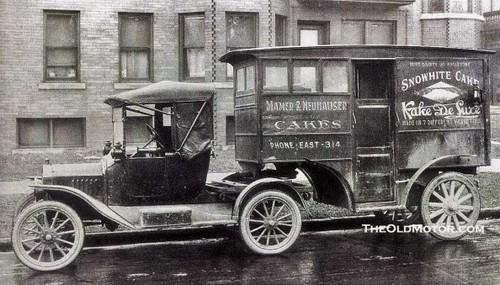
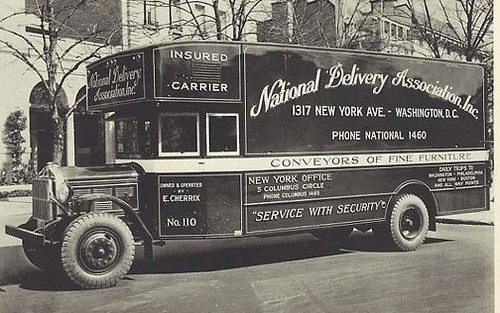
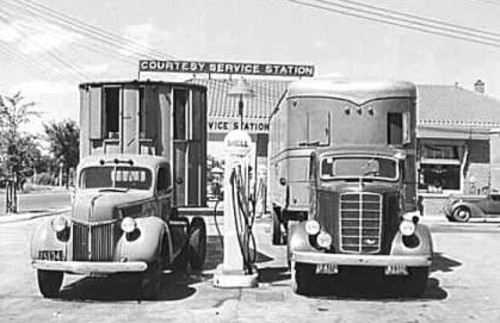
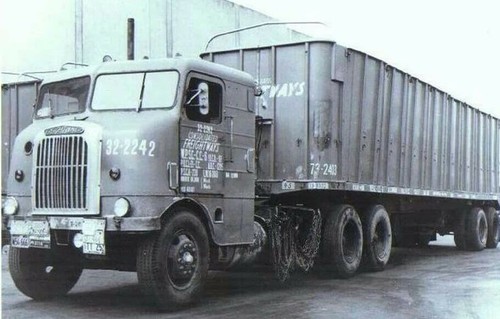
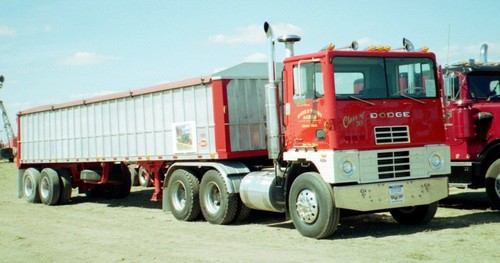
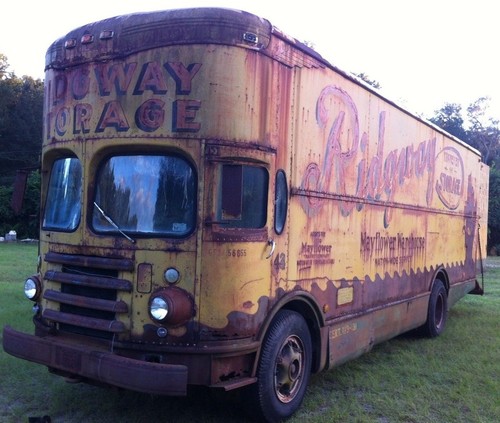
_500x282.jpg)